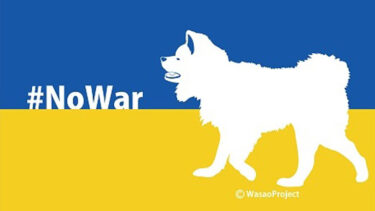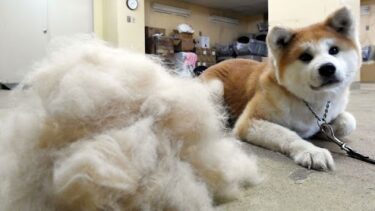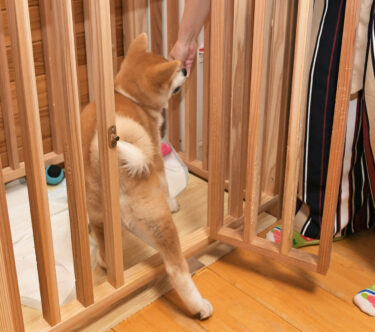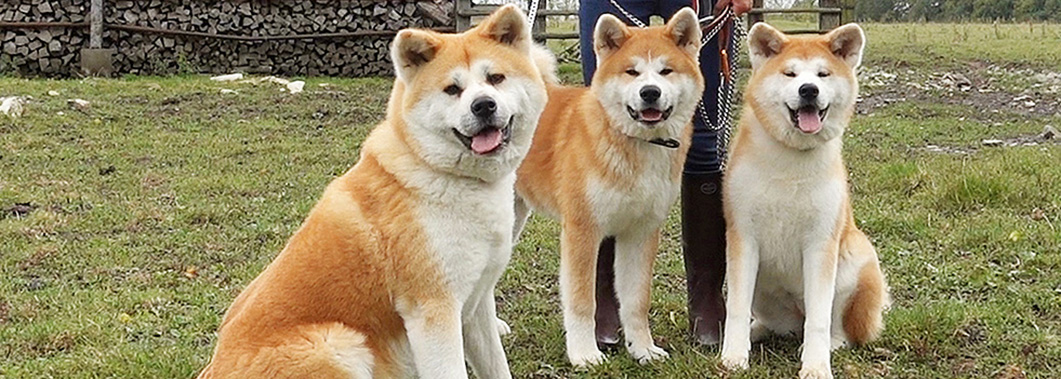The Akita Prefectural Museum, located in Kanaashi, Akita City, has a collection of works featuring Akita dogs by Hiwatashi Giichi (d.1987), the third-generation creator of Nakayama Dolls in Yokote City. These works present the ideal poses of Akita dogs, which is how Giichi raised the reputation of Nakayama Dolls nationwide. Marutani Hitomi, deputy director of the museum, helped interpret the dolls and Hiwatashi Giichi’s life.
Nakayama Dolls are a kind of clay doll created by Noda Ukichi and Hiwatashi Yoshi in Nakayama, Yoshida Village, Hiraka County (now Hiraka Town, Yokote City) around the beginning of the Meiji era. During the Showa era, Hiwatashi Giichi, Yoshi’s grandson, created new dolls based on events and customs that symbolized Akita and called them Yokote Dolls. This article will focus on two of his works featuring Akita dogs that Giichi made before 1935 and examine the image of dolls that he sought to achieve.

The Akita dog was designated as a national natural treasure in 1931 and was characterized by its upright ears, curly tail, and large body. However, Akita dogs with those characteristics were rarely seen in the early Showa period. Surprisingly, the “Akita Dog Relief” made by Giichi perfectly represented the ideal form of an imposing Akita dog.
The clay doll of “Loyal Dog Hachiko” made by Giichi has the same pose as the bronze statue of Hachiko built in front of Shibuya Station in 1934. Hachiko, who waited at the station every day for his deceased master to return, was so famous that people built a bronze statue of him while he was still alive.

Hachiko had both ears standing when he was a puppy, but his left ear drooped later in life due to an injury. The statue in front of Shibuya Station shows his left ear hanging down and his tail extended out. However, because this appearance does not resemble the ideal Akita dog, there was controversy over whether to make the statue with standing ears and a curly tail or depict the true image of Hachiko. The debate continued when a stuffed specimen of Hachiko was to be made.
When creating Akita dog clay dolls, Giichi received a lot of advice from Ono Susumi, who devoted tremendous effort to the work of preserving Akita dogs. The museum has a preserved letter dated 1933 that highlights the correspondence between Giichi and the owner of Osawa Senshindou (a Yokote Dolls dealer) in Yokote Town (now Yokote City). Giichi wrote, “Yesterday I received a letter from Mr. Ono of Odate Junior High School. He provided detailed comments about the dolls I sent him and lent me some of his treasured Akita dog photographs.” The letter concluded with a note that he would try to make another doll closer to the appearance of real Akita dogs.
Ono also wrote to Osawa that he and Giichi had exchanged letters several times and provided honest critiques of his art. However, he also described Giichi’s Akita dog clay doll as “a work of great effort.” Perhaps because of Ono’s advice, Giichi’s “Akita Dog Relief” depicts an ideal Akita dog with a large curly tail and standing ears, and his “Loyal Dog Hachiko” shows the real Hachiko.
As for the color of Hachiko‘s hair, which is not shown in the bronze statue, Ono wrote, “It is said to be yellow, but as far as I can tell, it is a light red. It’s not wrong to even say that it’s a white dog.” Because of Ono’s description, the face and belly of Giichi’s Hachiko are reddish-white, and the back is colored yellowish. Without the advice of someone who had seen Hachiko, it would have been impossible for Giichi to create this complex color scheme.
When creating his dolls, Giichi tried to make them not only a toy or an ornament, but also something educational and inspiring. For this reason, he often sought advice from experts. The knowledgeable people of Yokote Town who often gathered at the Osawa Senshindou helped connect Giichi with such professionals. As a result, the cooperation of many people and Giichi’s earnest pursuit of authenticity in doll making led to the development of Nakayama Dolls.








